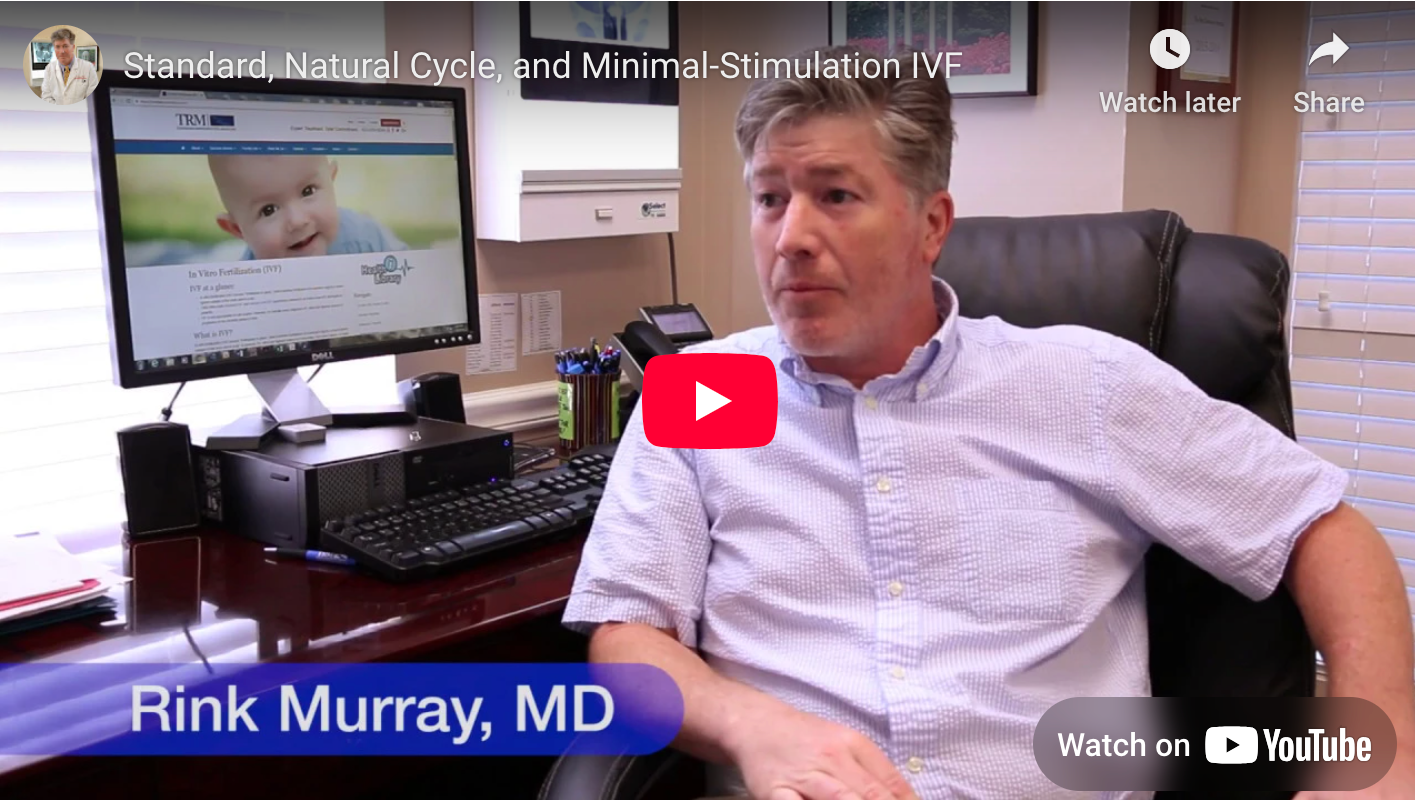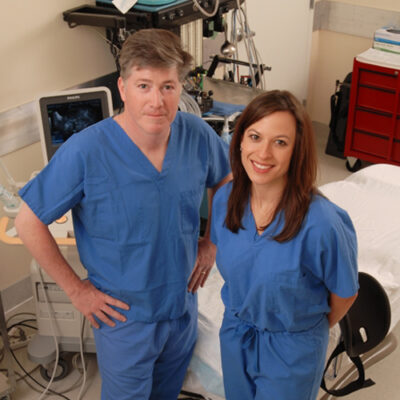These three types of IVF share the same ultimate goal, but how are they different? Dr. Rink Murray explains.

Let’s start with the standard IVF process. Standard IVF is a procedure where a woman takes a high dose of medication to get a maximal number of eggs to be produced by her ovaries. We retrieve those eggs, fertilize them, and in general that maximizes the number of embryos available for transfer. So she has the most opportunities to get pregnant.
By contrast, in minimal-stimulation IVF we give a smaller dose of medication, she gets a smaller number of eggs, she has a smaller number of embryos, so she has fewer opportunities to get pregnant.
In natural cycle IVF, we typically let the woman ovulate on her own, so we’re going after one egg. Well, that is a lot like walking on a high wire: Any misstep and you could fail to get pregnant. It has the lowest chance of pregnancy, but it also has the lowest cost.
IVF costs and considerations
On average, a standard IVF cycle is around $15,000 with medications. Minimal-stimulation IVF is going to be around $7,000 to $8,000 depending on the amount of medication somebody requires. And a natural cycle is going to be roughly $6,000 with medication.
Now, if a woman only has two or three eggs on her ovaries, it makes absolutely no sense to put her through the standard IVF process because we’re not going to get 10 or 15 eggs. She’s going to do just as well – maybe even better – with a minimal-stimulation IVF because we give her a small amount of drugs, she ovulates maybe two or three eggs, but now she can do that twice for the same amount of money she would have spent to do one cycle in the standard IVF process.
Natural cycle and mini-IVF to meet patient needs

Dr. Scotchie and I decided to start doing natural cycle IVF and mini-IVF primarily in response to patient needs.
We’ve had people who had medical conditions where they really couldn’t take medications – it would be too dangerous for them. So we’ve gone with natural cycle IVF for them. So there may be a medical reason that somebody has.
There can be situations where people just can’t afford the other medications and they’re willing to compromise some success rate in order to have a chance of getting pregnant. And that chance may be as high as 40 or 50 percent with mini-IVF, depending on the patient characteristics.
The bottom line is this is going to be an individual decision between the doctor and the patient to see who’s appropriate for which treatment.
Expert Treatment. Total Commitment. TRM.

At Tennessee Reproductive Medicine, you’ll find a team of professionals dedicated to delivering the highest quality of compassionate fertility care.
